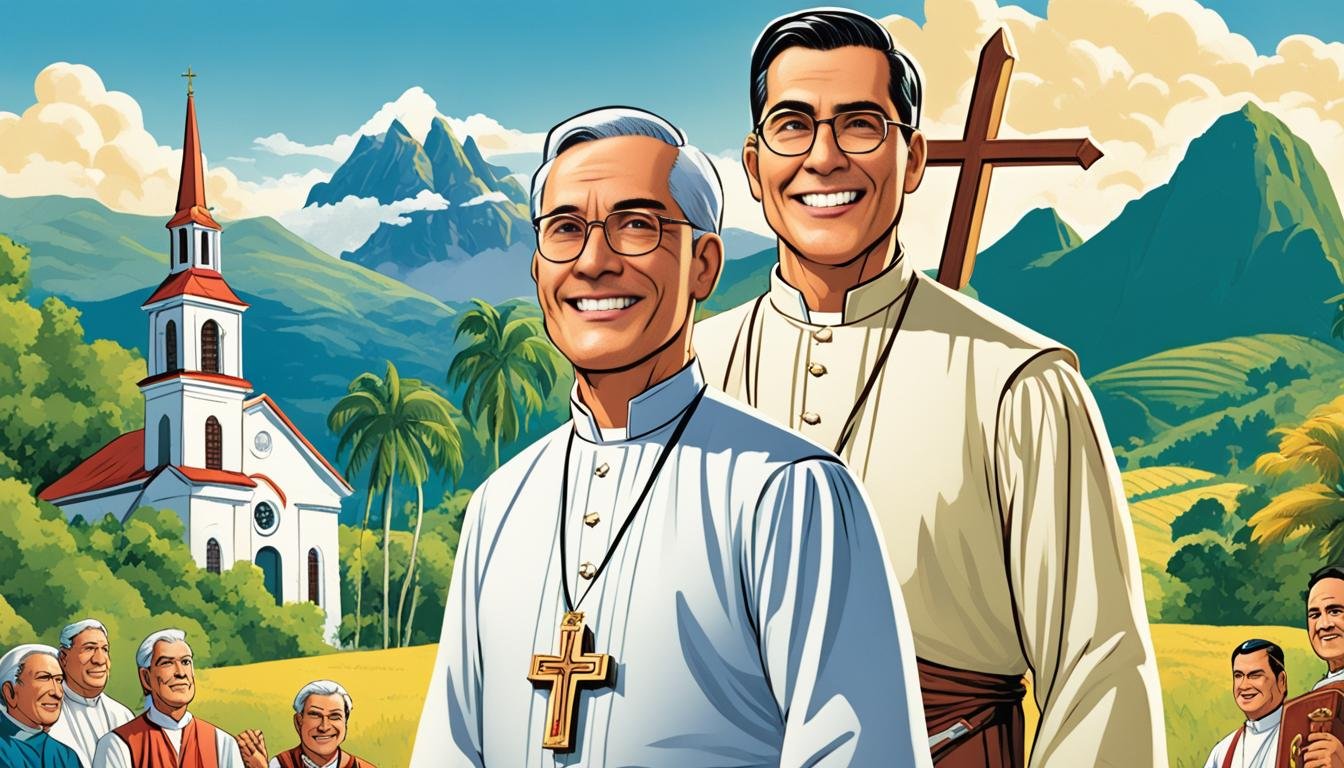In the stories of native Filipino priests from colonial times, one chilling tale stands out. It’s the story of Father Juan Severino Malyari. He was accused of causing 57 mysterious murders in Magalang, Pampanga over a decade in the 1800s. This event is a stark reminder of the deep and often ignored stories of indigenous religious leaders in the Spanish Philippine era.
This article will explore the untold stories of native Filipino priests who stood up against Spanish rule. This includes Padre Zamora and Padre Mallari. By remembering the efforts of these clergy members, the article hopes to celebrate their role in shaping Filipino nationalism and identity.
Key Takeaways
- The lesser-known stories of native Filipino priests who defied Spanish colonial authorities offer a unique perspective on the country’s history.
- Padre Malyari’s alleged involvement in a series of mysterious murders in Magalang, Pampanga during the 1800s challenges the common perception of native Filipino priests during the colonial era.
- The Catholic Church’s dominance and influence in the Philippines during the Spanish colonial period, particularly in the Pampanga region, is highlighted.
- The article aims to uncover the forgotten narratives of Filipino clergy members and their impact on the development of Filipino nationalism and identity.
- The article will explore the pre-colonial origins, rise to power, and artistic legacies of these native Filipino priests, providing a comprehensive understanding of their significance.
Introduction: Forgotten Narratives of Indigenous Clergy
The story of the Spanish colonial period in the Philippines features mainly the Spanish friars’ roles. They are known for starting the Christian faith there. But the forgotten narratives of the indigenous Filipino clergy often go untold. These native priests made big differences in the Catholic Church in the Spanish colonial Philippines.
At that time, many Filipinos embraced Christianity. Within the first 25 years of the first baptism in Cebu, about 250,000 Filipinos converted. This was supported by the first Christian books in Tagalog and Spanish, like the “Doctrina Christiana.” Other religious books in local languages followed, like the one in Hiligaynon in 1886.
The influence of the Catholic Church grew along with the number of indigenous Filipino clergy. These native priests served the local people and affected the country’s religious scene. They had to navigate the colonial powers, sometimes standing up to the Spanish friars.
Exploring the forgotten narratives of these indigenous Filipino clergy sheds light on old Spanish colonial Philippines’ stories. It shows how the native priests greatly influenced the cultural, religious, and political growth of the nation.
The Enigmatic Padre Mallari: Philippines’ First Serial Killer?
The Haunting Murders of Magalang, Pampanga
In the 1800s, the town of Magalang in Pampanga was known as the breadbasket of the Spanish East Indies. This quiet town became infamous due to a series of chilling murders, all linked to Padre Juan Severino Mallari. He was accused of being the first serial killer in the Philippines, when 57 locals were brutally murdered over a decade.
Padre Mallari was ordained as a priest in 1809. He served in different parishes until he settled as the pastor of San Bartolome Parish in Magalang in 1812. It didn’t take long for Padre Mallari’s dark secrets to come to light, tarnishing his image.
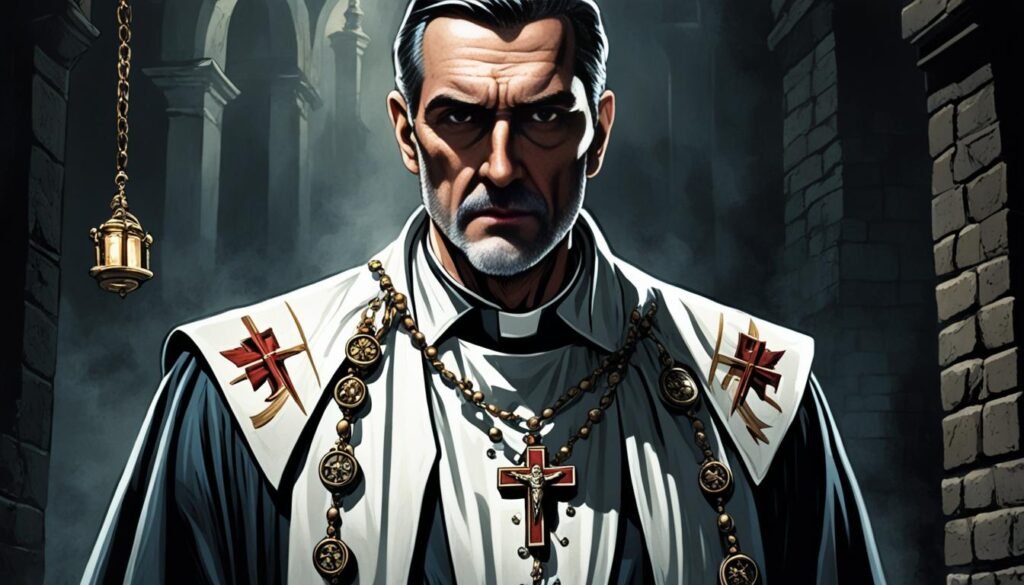
Padre Mallari’s Dark Descent into Madness
Over time, Padre Mallari, an esteemed calligraphy artist priest, showed signs of mental illness. In 1826, his mental health had deteriorated so much that a cura substituto replaced him. His spiral into madness culminated in a conviction for the murders of 57 people, shocking the community.
Padre Mallari faced the ultimate punishment for his crimes, becoming the first Filipino priest to receive the death penalty. In 1840, he was executed by hanging, ending his life in a tragic way. His story reflects the challenges many faced during that era.
Padre Mallari’s tale is a stark reminder of the complexities of human nature. Despite their position, even those like him can succumb to darkness. His story highlights the struggles of mental health in colonial Philippines, challenging idealized views of native priests.
Pre-Colonial Origins: The Malyari Clan and Mount Pinatubo
To get why Padre Mallari became so important, let’s look at the Malyari clan’s pre-colonial beginnings. They were closely tied to the local Kapampangan culture and the deity of Mount Pinatubo. The Malyari clan’s role in the community helped Padre Mallari become well-known later.
In 1680, a text called “Relation of the Zambals” by Domingo Perez first mentioned the Malyari and Mount Pinatubo. It showed how the Kapampangan people honored the Malyari deity in the mountain. The Malyari clan was key in this, known as the keepers of this important deity.
There’s geologic proof that Mount Pinatubo and Mount Arayat are linked. They share a birth from the same geological events. This bond is seen in 1876’s river patterns and tales like a “cloud bridge” between the two mountains.
| Pre-Colonial Origins | Key Figures and Events |
|---|---|
| Malyari Clan |
|
| Mount Pinatubo and Mount Arayat |
|
| Indigenous Kapampangan Culture |
|
The Malyari clan’s beliefs in Mount Pinatubo shaped Padre Mallari’s spiritual journey. As a part of this significant family, he found his path to leadership in the Catholic Church.
Path to Power: Padre Mallari’s Rise and Appointments
In the Spanish East Indies, Padre Juan Severino Mallari shined. He came from the province of Pampanga. Despite many challenges, Padre Mallari climbed the ranks. He became the first native Filipino priest to lead at Magalang’s parish.
A Man of Many Firsts
Padre Mallari’s journey up was truly impressive. Born into the Malyari clan, he understood the Spanish East Indies’ complex world. He used his family’s high status to get key roles. This made him a key figure in the area’s Catholic community.
The Breadbasket of Spanish East Indies
Pampanga was essential in the colonial economy. It was known as the “breadbasket of the Spanish East Indies.” This was because it provided important crops. Padre Mallari’s role in the Pampanga parish system highlighted the region’s key place in colonial power.
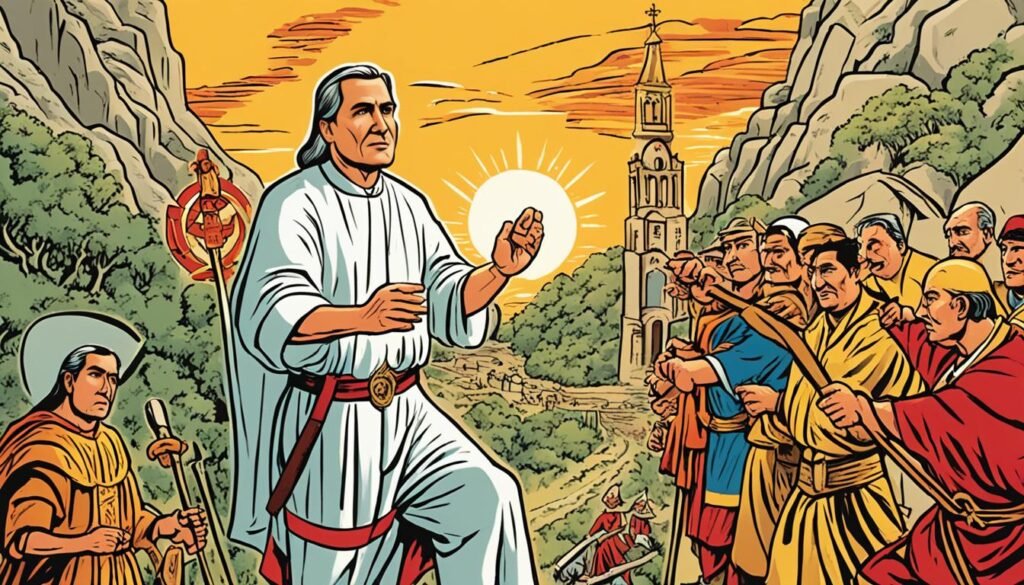
| Padre Mallari’s Accomplishments | Significance |
|---|---|
| First native Filipino priest to lead the Magalang parish | Broke the monopoly of Spanish clergy, paving the way for greater representation of indigenous clergy |
| Appointed as a trusted advisor to colonial authorities | Leveraged his position to advocate for the interests of the local Kapampangan community |
| Recognized for his administrative skills and leadership | Challenged the perception of native clergy as inferior to their Spanish counterparts |
The Cavite Mutiny: Sparking Filipino Nationalism
In 1872, a big change came to the Philippines. On January 20th, the Cavite Mutiny started, pushing for Filipino nationalism. This event was key in breaking away from Spanish colonial rule. It happened at the Fort San Felipe in Cavite, a place under the Spanish East Indies then.
Spanish Accounts of the Uprising
The Spanish records say about 200 Filipino soldiers and laborers began the mutiny against the rulers. A battle followed, causing losses on both sides. The Spanish troops, with one group and four cannons, managed to stop the mutiny.
After the mutiny, Governor-General Izquierdo decided the fate of the rebels. He had 41 shot and 11 given life in prison. On February 17, 1872, the Gomburza, or native clergy who were part of the resistance, faced death. This made Filipinos even more determined to fight for their rights.
Filipino Perspectives on the Mutiny
For the Filipinos, the Cavite Mutiny was a stand against Spanish colonial control. The ones involved wanted more say and freedom. Killing the Gomburza and sending others away just made them want independence more.
Later, some Filipinos moved to Europe. Places like Madrid and Barcelona. They helped to spread the idea of being free from others’ control to the world.
Filipino Priests and the Fight for Representation
During the Spanish colonial era, Filipino priests fought for their place in the Catholic Church. They worked hard but were often overlooked because the Spanish clergy got more support.
Things got more intense after Monsignor Pedro Pelaez died in 1863. His death left a leadership gap. This gave Filipino priests a chance to show they deserved more power in the Church.
Fathers Mariano Gomez, Jose Burgos, and Jacinto Zamora, the Gomburza, are remembered for their work. They fought against Spanish control. They wanted more native priests to have a say in how the Catholic Church worked in the Philippines.
In the eighteenth century, the middle class started to grow. This group, which included Spanish mestizos and Chinese mestizos, wanted changes. They pushed for more Filipino priests to be heard and for independence from Spanish rule.
| Key Figures | Contribution |
|---|---|
| Fathers Mariano Gomez, Jose Burgos, and Jacinto Zamora (Gomburza) | Fought against Spanish domination in the Philippine Catholic Church, promoted the rights of Filipino priests, and pushed for secularization. |
| Middle class (Spanish mestizos, principalia, Chinese mestizos) | Challenged the dominance of the Peninsulares and advocated for greater Filipino representation and autonomy. |
The struggle of the Filipino priests was a big part of seeking freedom. It played a key role in forming Filipino nationalism at that critical time in Philippine history.
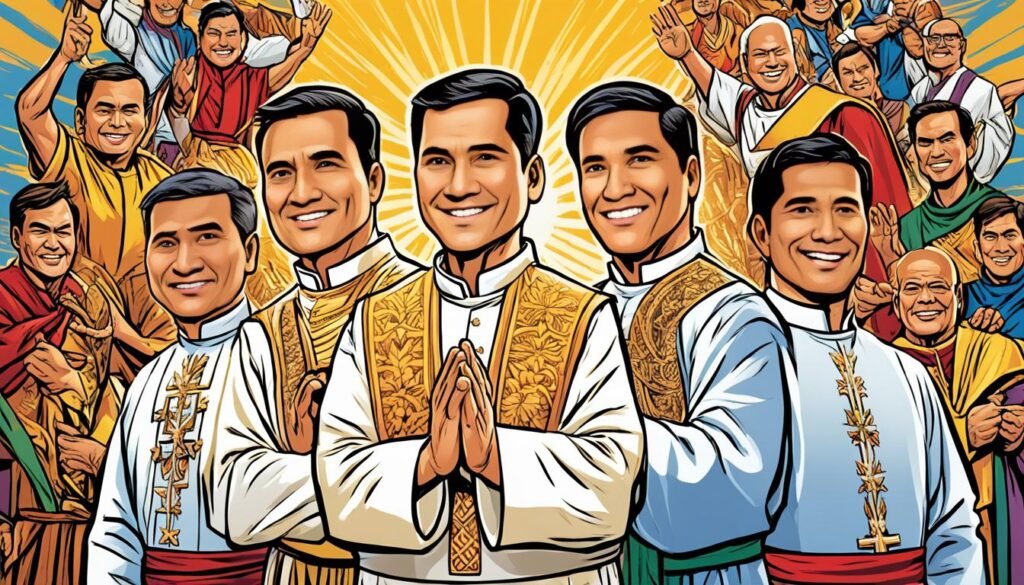
Artistic Legacies: Calligraphy and Painting
Padre Mallari was not only a revered Filipino priest but also an artist. His exceptional skills in calligraphy and painting marked the Philippine clergy’s cultural history significantly. By excelling in these art forms, he set an example for succeeding generations.
He gained fame for his detailed, beautiful writing during the colonial period. His careful crafting of letters enhanced important religious papers and texts. This art was both practical and showed the artistic talents of Padre Mallari and other native Filipino clergy during that time.
Padre Mallari wasn’t just about calligraphy; he was also a gifted painter. He produced energetic paintings of religious themes that were very popular. His works, showing both Catholic icons and local scenery, combined European and native styles. This mix highlighted the diverse yet intertwined art forms of that era in the Philippines.
His contributions were crucial. They helped people see the native Filipino clergy as leaders of both faith and cultural preservation. Today, their influence is still seen in Philippine art. This shows how important these forgotten artists were, leaving a lasting impression on Philippine culture.
Mental Health Challenges in the Colonial Era
In the Philippines, during the Spanish colonial period, mental health institutions started popping up. The Hospicio de San Jose and Hospicio de San Juan de Dios showed a better understanding of mental health needs. They were in thirty-six provinces and sorted people by things like sex, behavior, and where they came from. This included categories such as Indio, Español peninsular, Español Filipino, Mestizo español, chino, or Sangley.
Spain’s Early Psychiatric Hospitals
Spain brought a more scientific view to mental health care during its colonial days. This change is shown in a 2014 study by Ramos about the mentally ill in the late colonial era. The study found a lack of focus on physical health in mental hospitals.
Lack of Care for Father Mallari
Patients who got better were often sent home to their families. But, due to a shortage of proper care and knowledge, many people didn’t make it. Notably, Father Mallari faced these tough conditions, showing how challenging mental health issues were back then.
Beyond Zamora and Mallari: Uncovering Hidden Histories
The stories of native Filipino priests like Padre Zamora and Padre Mallari have rocked the world of history. But there are many more hidden histories we’ve yet to discover. These untold tales of indigenous clergy members show how much they’ve shaped Philippine history.
Exploring beyond Zamora and Mallari, we find a rich tapestry of forgotten stories. These stories challenge what we thought we knew about the Spanish colonial period. They offer a new view on the native Filipino priests‘ impact on the Philippines at that time.
| Padre Zamora | Padre Mallari | Other Native Priests |
|---|---|---|
| Known for his defiance of Spanish colonial authorities | Accused of being the Philippines’ first serial killer | Diverse experiences and contributions often overlooked |
| Played a significant role in the development of Filipino nationalism | Belonged to the influential Malyari clan with pre-colonial roots | Played crucial roles in their local communities and the broader struggle for independence |
| His story has been widely documented and studied | His narrative challenges the common perception of native Filipino priests | Their stories remain largely hidden from mainstream historical accounts |
By reclaiming these hidden histories, we get a better picture of the many indigenous clergy members during the colonial period. This effort is key in building our understanding of Philippine history. It’s vital for our national identity.
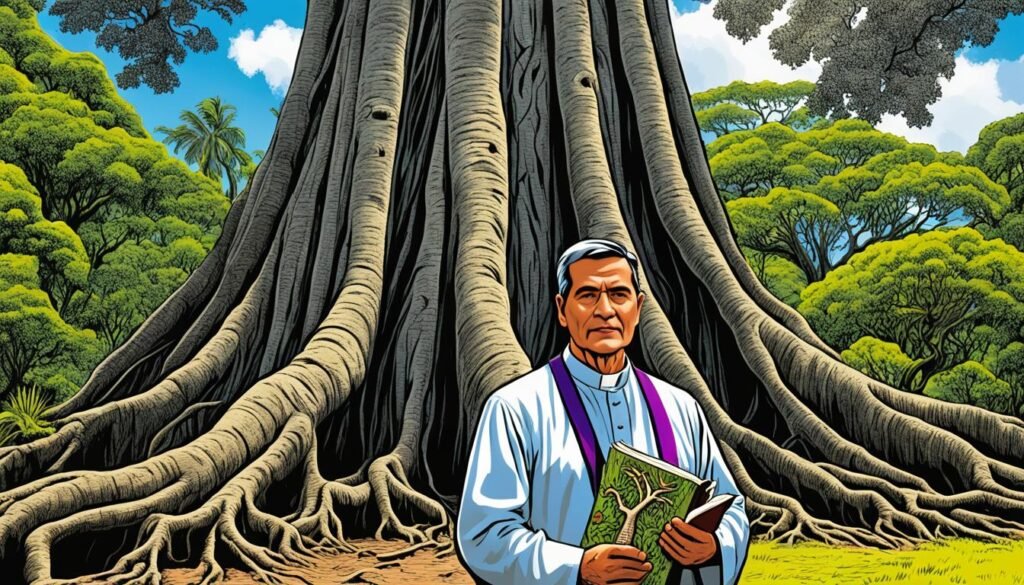
Filipino Priests and the Struggle for Independence
Filipino priests wanted more say and independence within the Catholic Church. Their battle for rights intertwined with the fight for independence from Spain. In 1872, the deaths of Gomburza shocked the nation and fueled desires for freedom.
Gomburza and the Martyrs of Bagumbayan
Three Filipino priests – Gomburza – were unfairly charged with stirring up rebellion. They were executed in Bagumbayan, stirring deep anger among Filipinos. Their deaths, and of others at Bagumbayan, symbolized the fight against the Spanish and the pursuit of freedom.
The Birth of Filipino Nationalism
The Gomburza events led to more executions, pushing for a strong Filipino nationalist movement. Dr. José Rizal and others inspired a push for a Philippine identity. This effort resulted in the Philippine Revolution from 1896 to 1898.
The Filipino priests demanding rights and the call for independence from Spain were crucial. They helped form Filipino nationalism that guided the Philippines towards self-government, away from colonial rule.
Legacy and Impact on Modern Philippine Society
Native Filipino priests like Padre Mallari and Padre Zamora greatly influenced modern Philippine society. Their stories and work have shaped the country’s culture, religion, and politics. They have brought attention to their long overlooked role in history.
The Catholic Church’s influence in the Spanish colonial era was vital. The power of the Spanish friars and government met resistance from local native priests. This led to a clash of values and authority in Filipino communities.
Catholic priests executed in the 1872 Cavite Mutiny, including Burgos, Gomez, and Zamora, held significant meaning for the Philippines. Their deaths fueled the desire for independence. This was a turning point in the country’s fight against Spanish colonial rule.
In the 20th century, the Catholic Church gained power again, especially in the 1930s. It influenced the politics through its control over universities. Most politicians were Roman Catholic, strengthening the Church’s role in nation-building.
Cardinal Jaime Sin during the Marcos era was key in the fight for freedom and justice. He led the Church against the Marcos regime. The Church’s efforts in the People Power Revolution in 1986 led to Marcos’s exile and Aquino’s presidency.
Today, Padre Mallari and Padre Zamora’s impact is still felt. The Filipino society’s culture, religion, and politics were deeply influenced by their work. Their stories highlight the ongoing struggle for independence and the country’s identity.
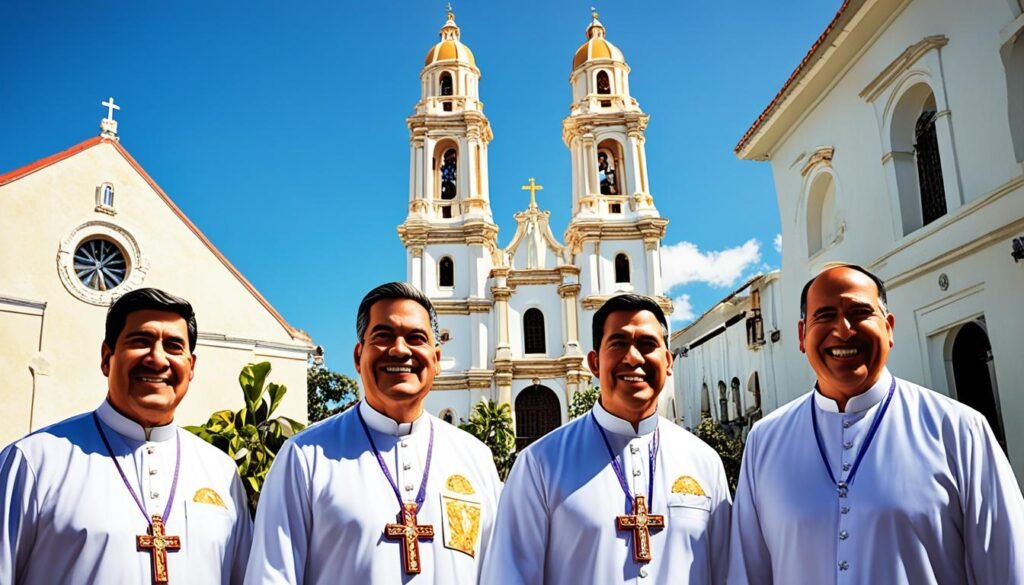
Conclusion: Reclaiming Narratives, Shaping Identities
Exploring stories like those of Padre Zamora and Padre Mallari shows the importance of remembering them. It helps us better know who we are as Filipinos. These priests’ tales are often left out in favor of colonial versions. But they show the beauty of our culture and faith.
Looking back at the work of native priests, we see how they’ve added to our country. They remind us of our diverse and strong nature. Their efforts help tell a different story from the usual colonial ones. This makes our history richer and more truthful.
Reclaiming stories is key to understanding our true identities. Stories of native priests in the Spanish era are especially important. They give us a sense of pride and belonging in the big story of our nation. Reclaiming these stories is more than just a history lesson. It’s about standing up for the voices that were silenced.
FAQ
What lesser-known stories of native Filipino priests who defied Spanish colonial authorities will the article explore?
The article dives into the lives of Padre Zamora and Padre Mallari. It explores their important roles in Philippine society under Spanish rule. Their stories are often overlooked but offer a unique perspective.
How will the introduction highlight the overlooked stories of native Filipino priests?
The introduction shines a light on how the stories of native priests were overshadowed. It shows the focus on Spanish friars left out key indigenous figures. This sets the scene for exploring these hidden histories.
What will the article examine regarding the case of Padre Juan Severino Mallari?
The article looks into the Magalang murders and Padre Mallari’s connection. It examines the claims of his mental health and the colonial response. This challenges the idea of how native priests were perceived during that time.
How will the article provide context on the Malyari clan’s significance and status within the local community?
It traces the Malyari clan back to pre-colonial times. This clan, to which Padre Mallari belonged, has roots in the Kapampangan culture and revered Mount Pinatubo deity. This background helped Padre Mallari become a prominent figure later on.
What will the article explore regarding Padre Mallari’s remarkable rise within the colonial Catholic Church hierarchy?
The article will talk about Padre Mallari’s rise through the Catholic Church ranks. It will also focus on Pampanga’s agricultural importance to Spain in the area. Such info is vital to understand his significance during that period.
How will the article examine the Cavite Mutiny of 1872 and its connection to native clergy members?
The article will cover how the Cavite Mutiny tied to native clergy members. It looks at Spanish and Filipino accounts of the incident. Also, it will explore the impact the mutiny had on the fight for Filipino freedom.
What will the article highlight regarding the broader context of Filipino priests’ struggle for representation and recognition within the colonial Catholic Church hierarchy?
It will focus on the uphill battle native priests faced against their Spanish peers. Their struggles and efforts to secure their place in the church system will be highlighted. This sheds light on the challenges they faced.
How will the article showcase Padre Mallari’s artistic talents and their impact on the cultural legacy of the native clergy?
It will showcase Padre Mallari’s skills in calligraphy and painting. His proficiency in these arts was groundbreaking for native priests at the time. His artistic achievements significantly shaped the native clergy’s cultural legacy.
What will the article explore regarding the mental health challenges faced by Padre Mallari and the broader context of the colonial era’s approach to mental illness?
The article will discuss Spain’s early steps in mental health care. It will also talk about the challenges faced by individuals like Padre Mallari. There was a severe lack of proper care for people dealing with mental health issues during that time.
What other native Filipino priests’ stories will the article uncover beyond Padre Zamora and Padre Mallari?
Besides Padre Zamora and Padre Mallari, the article will also discuss others. It will focus on native priests whose stories have been forgotten. This adds to the importance of remembering these significant figures.
How will the article explore the intersection between the Filipino priests’ fight for representation and the broader struggle for independence from Spanish colonial rule?
It will focus on Gomburza and their impact on Filipino nationalism. Their execution played a key role in sparking the nationalist movement. The article also looks into the role of other native priests in this pivotal moment.
What will the article discuss regarding the lasting legacy and impact of the native Filipino priests on contemporary Philippine society?
The article explores how priests like Padre Mallari and Padre Zamora have influenced the Philippines. Their cultural, religious, and political contributions are significant. The article emphasizes the ongoing importance of their stories in the nation’s history.
Source Links
- https://www.tagalog.com/videos/watch.php?video_id=259119
- https://blogs.loc.gov/international-collections/2018/07/catholicism-in-the-philippines-during-the-spanish-colonial-period-1521-1898/
- https://filipiknow.net/juan-severino-mallari-philippines-first-serial-killer/
- https://en.wikipedia.org/wiki/Philippine_mythology
- https://en.wikipedia.org/wiki/History_of_the_Philippines
- http://sambali.blogspot.com/2009_10_10_archive.html
- http://www.philippinestudies.net/files/journals/1/articles/1429/public/1429-1528-1-PB.pdf
- https://en.wikipedia.org/wiki/1872_Cavite_mutiny
- https://www.cliffsnotes.com/study-notes/6311578
- https://www.slideshare.net/slideshow/contemporary-philippine-arts-from-the-regions-part2pptx/265827542
- https://www.dlsu.edu.ph/wp-content/uploads/pdf/conferences/research-congress-proceedings/2015/TPHS/022TPH_Ramos_CV.pdf
- https://www.slideshare.net/slideshow/the-philippine-literature/53793354
- https://sites.google.com/up.edu.ph/upbaguiolibraryserialssection/periodicals/o-p/philippine-studies-historical-ethnographic-viewpoints
- https://www.britannica.com/event/Philippine-Revolution
- https://rpl.hds.harvard.edu/faq/catholicism-philippines
- https://www.asianstudies.org/publications/eaa/archives/the-philippines-an-overview-of-the-colonial-era/
- https://history.rutgers.edu/docman-docs/undergraduate/honors-papers-2008/100-philippine-nationalism-an-analysis-of-the-development-of-philippine-national-identity/file
- https://www.xu.edu.ph/images/kinaadman_journal/img/Inscribing_Women_by_Cotejar.pdf

